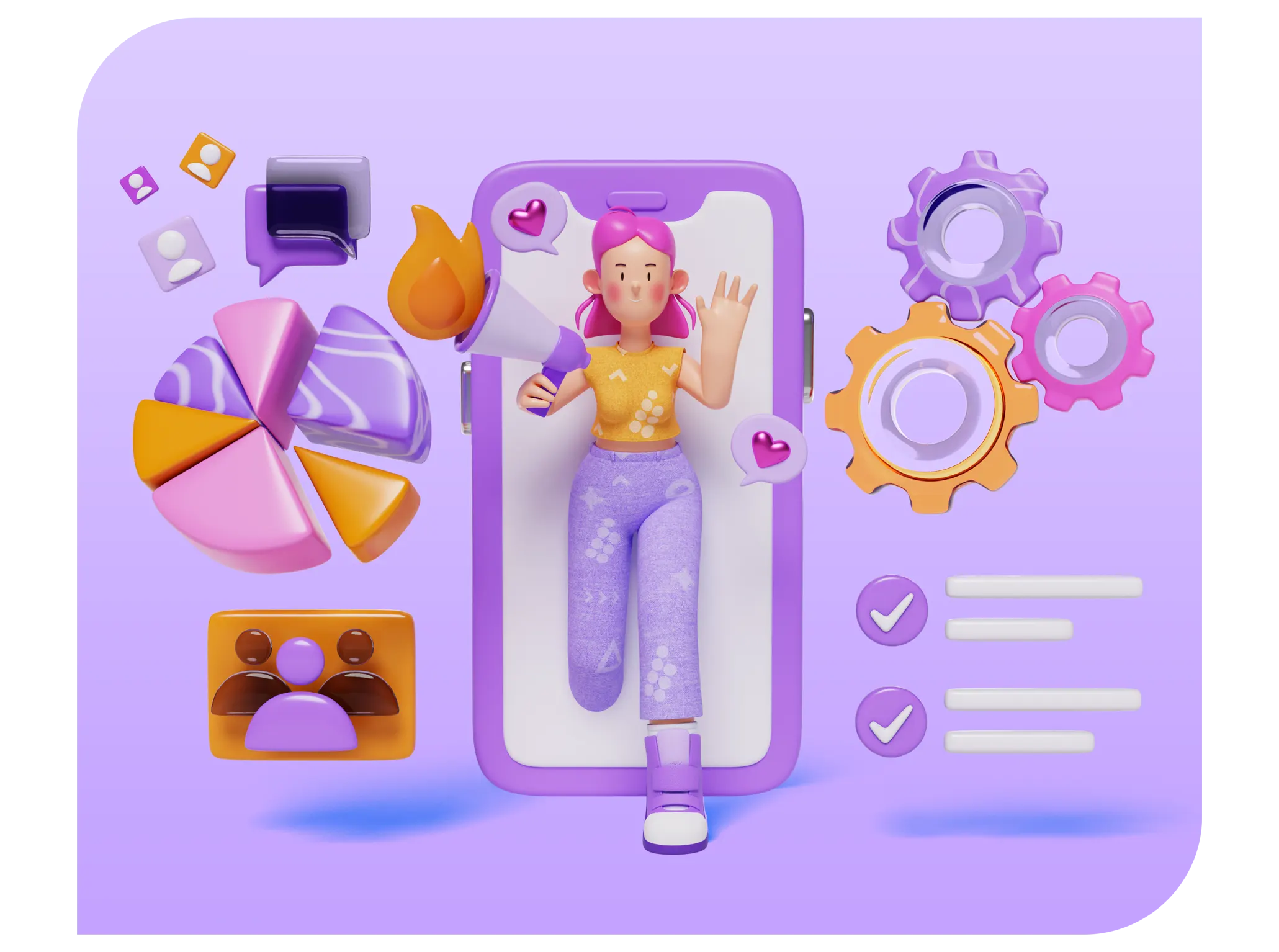
Mobile App Development Process Step-By-Step Guide
January 7, 2024
Mobile App Development Process Step-By-Step Guide
January 7, 2024Table of contents
The Ultimate Guide to Mobile App Development in Uganda: Build, Launch, and Scale Your Next Million App!
Are you ready to turn your brilliant app idea into a million-dollar reality? Look no further! In this ultimate guide to mobile app development, we’ll take you through the entire journey – from building your app to launching it in the market and scaling it for massive success.
Mobile applications are transforming how businesses engage with customers, streamline operations, and create new revenue streams. For entrepreneurs and business owners in Uganda, the potential to reach a vast audience through a well-designed mobile app is immense. Trophy Developers stands ready to guide you through every phase of mobile app development, helping you bring your vision to life.
This guide outlines the critical steps involved in developing a successful mobile app and showcases how Trophy Developers can be your trusted partner in this journey.
Understanding the mobile app development process
The first step is defining your app’s core functionality and features. This involves conducting extensive market research, analyzing your target audience, and identifying the problem your app aims to solve.
Next, you’ll need to choose the right technology stack and development approach. Will you build a native app for iOS, Android, or both? Or will you opt for a cross-platform solution like React Native or Flutter?
The design phase is crucial in shaping the visual appeal and intuitive user experience of your app. Collaborate with experienced UI/UX designers to craft a visually stunning and user-friendly interface.
Once the design is finalized, your development team will begin the coding process, bringing your app to life. This phase involves front-end development, back-end integration, and the implementation of various features and functionalities.
Finally, thorough testing and quality assurance measures must be implemented to identify and address any bugs, performance issues, or user experience challenges before launching your app.
By understanding and mastering each stage of the mobile app development process, you can increase your chances of creating a successful and impactful app that stands out in the crowded marketplace. Let’s delve deeper into the specific steps involved in this journey.
Market research and idea validation for your mobile application
Before starting the mobile app development journey, conducting thorough market research and validating your app idea is crucial. Identify your target audience, analyze the competitive landscape, and gather valuable insights through research methods like surveys and interviews. Once you understand your audience and the market, validate your app idea by creating a minimum viable product (MVP) and gathering feedback. This process ensures that your app resonates with your target audience and increases the chances of creating a successful mobile app that stands out in the marketplace.
Mobile app design and user experience (UX)
The design and user experience (UX) of your mobile app are critical for its success. An attractive and user-friendly app can significantly enhance user engagement, retention, and commercial success. Effective mobile app design should prioritize simplicity, responsiveness, and accessibility. Start by conducting thorough user research to understand your target audience. Establish a clear visual identity and pay attention to information hierarchy and navigation. Optimize app performance and gather user feedback continuously to refine your app and stay competitive.
Testing and quality assurance for your mobile app
A comprehensive testing strategy involves various methods:
- Unit testing: Validate individual components through automated tests.
- Integration testing: Verify seamless interaction between front-end and back-end components, including external services.
- UI/UX testing: Assess usability and user experience through testing and evaluations.
- Performance testing: Evaluate app performance under different conditions.
- Security testing: Assess app security and protect against vulnerabilities.
- Compatibility testing: Ensure the app functions across different devices and operating systems.
- Usability testing: Gather user feedback to identify areas for improvement.
Implement a structured testing process aligned with the development lifecycle, using automated and manual testing. Prioritizing quality assurance can lead to a polished and reliable app, enhancing user satisfaction and success.
App launch and marketing strategies:
When launching your mobile app, ensure it meets app store guidelines. Optimize its metadata for better discoverability. Develop a launch plan with organic and paid marketing strategies, including app store optimization (ASO) and other marketing tactics to drive downloads and increase awareness. In addition to ASO, consider implementing a range of marketing tactics to generate awareness and drive downloads for your app. This can include:
- Content marketing: Create engaging and informative content, such as blog posts, videos, or social media posts, to educate your target audience about your app's features and benefits.
- Social media marketing: Promote your app on relevant social media platforms, leveraging influencers, paid advertising, and organic engagement to reach your target audience.
- Email marketing: Build an email list of interested users and keep them informed about your app's updates, new features, and special offers.
- Partnerships and cross-promotion: Collaborate with complementary brands, influencers, or other app developers to cross-promote your app and reach a wider audience.
- Paid advertising: Invest in targeted ad campaigns on platforms like Facebook, Google, or app-specific ad networks to drive downloads and user acquisition.
- PR and media outreach: Develop a media relations strategy to secure coverage and reviews from industry publications, blogs, and tech influencers.
Post-Launch Optimization and Growth
Once your app is live, the journey doesn't stop. Continuous optimization and growth are key to maintaining user engagement, attracting new users, and achieving long-term success.
Monitoring and Analytics
- Track key metrics: Use analytics tools to monitor user behavior, engagement rates, acquisition channels, and other vital metrics.
- Identify trends and patterns: Analyze data to understand how users interact with your app and identify areas for improvement.
- Make data-driven decisions: Use insights from analytics to inform your optimization efforts and make informed decisions about updates and features.
User Feedback and Iteration
- Gather feedback: Encourage users to provide feedback through in-app surveys, reviews, or support channels.
- Listen to your users: Pay close attention to feedback and use it to identify areas for improvement.
- Iterate and update: Continuously update your app based on user feedback and evolving market trends.
App Store Optimization (ASO)
- Optimize metadata: Regularly update your app's title, description, keywords, and screenshots to improve its visibility in search results.
- Monitor ASO metrics: Track your app's ranking, downloads, and other ASO metrics to identify opportunities for improvement.
- Stay up-to-date with ASO best practices: Keep informed about the latest ASO trends and guidelines to optimize your app's visibility.
Content Marketing and Community Building
- Create valuable content: Develop blog posts, articles, videos, or social media content that educates and engages your target audience.
- Build a community: Foster a sense of community around your app by encouraging user interaction, hosting events, or creating online forums.
- Leverage user-generated content: Encourage users to share their experiences with your app and showcase their content on your platforms.
Monetization Strategies
- Explore different monetization models: Consider options like in-app purchases, subscriptions, advertising, or freemium models.
- Choose the right model for your app: Select a monetization strategy that aligns with your app's value proposition and target audience.
- Optimize for revenue: Continuously experiment with different monetization tactics to maximize your revenue potential.
Scaling and Growth
- Growth plan: As your app gains popularity, ensure your infrastructure can handle increased traffic and user load.
- Expand your reach: Explore opportunities to expand your app's reach to new markets or user segments.
- Consider partnerships and collaborations: Partner with complementary businesses or influencers to increase your visibility and reach a wider audience.
By following these guidelines and continuously optimizing your app, you can build a successful and sustainable mobile app that not only meets your business goals but also provides value to your users.
